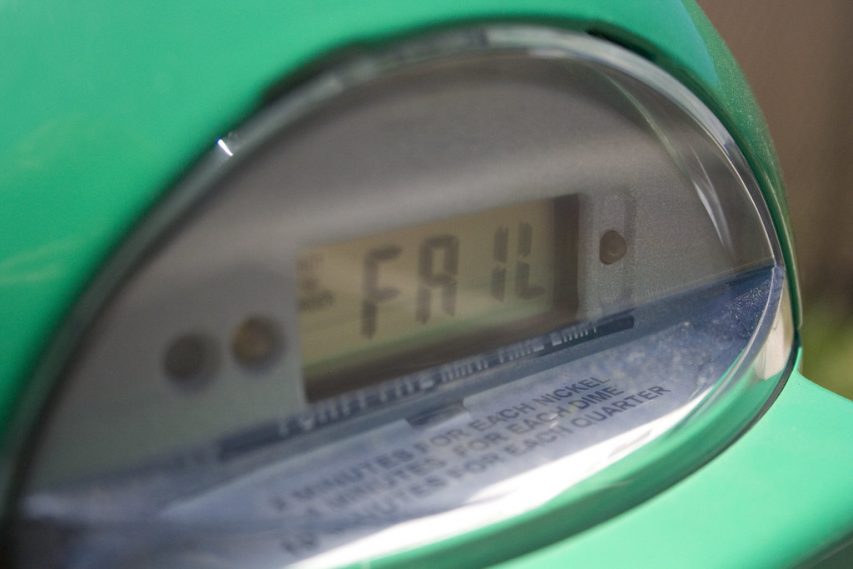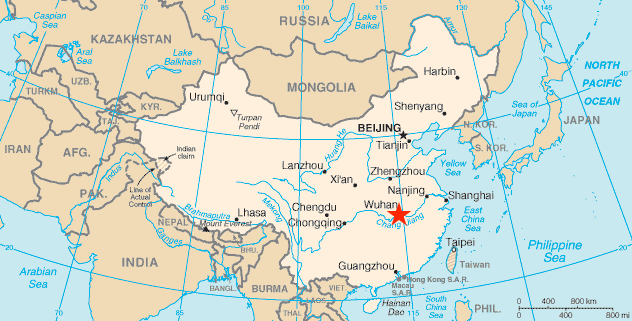Forgotten Weapons
Published 13 Sep 2016Failed to sell at auction.
“Pom-Pom” was the name given to the 37mm Maxim gun by the Boers of South Africa, based on the gun’s sound. It was a Maxim machine gun scaled up to the quite impressive 37mm caliber, intended primarily for naval use defending large vessels against small torpedo boats. This particular example is serial number 2024, made in 1889 and then sold three times before being ultimately purchased by the United States Coast Guard and installed on the USS Manning (along with a second gun, number 2026). The Manning was promptly put into military service by the Navy and steamed down to Cuba, where it participated in the first bombardment of Cuba during the Spanish-American War.
These 37mm guns could fire a wide variety of projectiles, including solid rounds which could pierce an inch (25mm) of iron armor at 100 yards and hollow rounds filled with black powder and fused to explode on impact. During World War One, they would be pushed into anti-aircraft service, with the explosive rounds being extremely effective on early aircraft (when you could get a hit, anyway).
Related:
Bethlehem Steel 37mm Gun: https://www.youtube.com/watch?v=abEq7…
Vickers 2.95″ Mountain Gun: https://www.youtube.com/watch?v=-b53i…
Maxim lMG08/15: https://www.youtube.com/watch?v=Gbt1_…
February 11, 2020
Maxim Pom-Pom 37mm Machine Gun
QotD: Agriculture and the rise of the state
Why should cereal grains play such a massive role in the earliest states? After all, other crops, in particular legumes such as lentils, chickpeas, and peas, had been domesticated in the Middle East and, in China, taro and soybean. Why were they not the basis of state formation? More broadly, why have no “lentil states,” chickpea states, taro states, sago states, breadfruit states, yam states, cassava states, potato states, peanut states, or banana states appeared in the historical record? Many of these cultivars provide more calories per unit of land than wheat and barley, some require less labor, and singly or in combination they would provide comparable basic nutrition. Many of them meet, in other words, the agro-demographic conditions of population density and food value as well as cereal grains. Only irrigated rice outclasses them in terms of sheer concentration of caloric value per unit of land.
The key to the nexus between grains and states lies, I believe, in the fact that only the cereal grains can serve as a basis for taxation: visible, divisible, assessable, storable, transportable, and “rationable.” Other crops — legumes, tubers, and starch plants — have some of these desirable state-adapted qualities, but none has all of these advantages. To appreciate the unique advantages of the cereal grains, it helps to place yourself in the sandals of an ancient tax-collection official interested, above all, in the ease and efficiency of appropriation.
The fact that cereal grains grow above ground and ripen at roughly the same time makes the job of any would-be taxman that much easier. If the army or the tax officials arrive at the right time, they can cut, thresh, and confiscate the entire harvest in one operation. For a hostile army, cereal grains make a scorched-earth policy that much simpler; they can burn the harvest-ready grain fields and reduce the cultivators to flight or starvation. Better yet, a tax collector or enemy can simply wait until the crop has been threshed and stored and confiscate the entire contents of the granary.
Compare this situation with, say, that of farmers whose staple crops are tubers such as potatoes or cassava/manioc. Such crops ripen in a year but may be safely left in the ground for an additional year or two. They can be dug up as needed and the reaminder stored where they grew, underground. If an army or tax collectors want your tubers, they will have to dig them up tuber by tuber, as the farmer does, and then they will have a cartload of potatoes which is far less valuable (either calorically or at the market) than a cartload of wheat, and is also more likely to spoil quickly. Frederick the Great of Prussia, when he ordered his subjects to plant potatoes, understood that, as planters of tubers, they could not be so easily dispersed by invading armies.
The “aboveground” simultaneous ripening of cereal grains has the inestimable advantage of being legible and assessable by the state tax collectors. These characteristics are what make wheat, barley, rice, millet, and maize the premier political crops. A tax assessor typically classifies fields in terms of soil quality and, knowing the average yield of a particular grain from such soil, is able to estimate a tax. If a year-to-year adjustment is required, fields can be surveyed and crop cuttings taken from a representative patch just before harvest to arrive at an estimated yield for that particular crop year. As we shall see, state officials tried to raise crop yields and taxes in kind by mandating techniques of cultivation; in Mesopotamia this included insisting on repeated ploughing to break up the large clods of earth and repeated harrowing for better rooting and nutrient delivery. The point is that with cereal grains and soil preparation, the planting, the condition of the crop, and the ultimate yield were more visible and assessable.
James Scott, Against The Grain: A deep history of the earliest states, 2017.
February 10, 2020
Why wood warps/cups, and how to stop it!
Stumpy Nubs
Published 17 Sep 2018SUBSCRIBE (FREE) TO STUMPY NUBS WOODWORKING JOURNAL► http://www.stumpynubs.com
HELP KEEP OUR VIDEOS FREE! Please support those who support us by visiting their websites and having a quick look around-
Fisch Tools: https://affinitytool.com/brands/fisch
Clear Vue Cyclones (Use coupon codeNUBS5):
iGaging Digital Tools: http://www.chipsfly.com/category/L.html
The coup that toppled Margaret Thatcher
Charles Moore published the third volume of his Thatcher biography last year (I’ve read the first two volumes, but not the final one). In Quillette, Johan Wennström reviews the book:
This November will mark 30 years since former British Prime Minister Margaret Thatcher left office. After she had narrowly failed to secure an outright win in a 1990 leadership contest triggered by a challenge from Michael Heseltine, her former defense secretary, the majority of Thatcher’s Conservative cabinet colleagues withdrew their support and forced her departure following what she described as “eleven-and-a-half wonderful years.”
For Thatcher, the “coup,” as she referred to the events of 1990, had been unexpected. But as journalist Charles Moore explains in the third and final volume of his authorized Thatcher biography, Herself Alone (2019), the writing had been on the wall for some time. Thatcher’s style, which some considered abrasive, had turned senior figures against her. And many younger party members believed that if the party were to win a fourth consecutive election victory, in 1991 or 1992, it should be under a new standard-bearer (who turned out to be John Major).
An important underlying factor was the long-standing policy conflict regarding the European Community (or the EC as the European Union was then known), which pitted Thatcher against many in her own government, as well as against continental European leaders and George H. W. Bush’s White House. She was perceived as a “Cold Warrior” who was overly cautious in regard to the future of Europe, especially the project of European political and economic integration.
To some modern observers, that criticism of Thatcher remains apt. In a recently published book on international relations authored by former Swedish Prime Minister Carl Bildt, The Age of Disorder (Den nya oredans tid, 2019), Thatcher’s reluctance to endorse a speedy German reunification is attributed to her obsolete anxieties regarding “the dangers of a strong Germany.”
Moore’s latest volume, which focuses extensively on Thatcher’s views about Europe, shows her in a more nuanced light. In some ways, in fact, she was actually ahead of her time. And some of the current problems facing Europe, and the West more generally, might have been mitigated had her opinions been given a more generous audience.
Unfortunately, I don’t have the money for new hardcover books these days so I’ll have to wait until this volume gets a paperback edition or [shudder] get a library card and wait for it to show up at the local library.
History Buffs: Kingdom of Heaven
History Buffs
Published 15 Aug 2015Apparently, Orlando Bloom was suffering from a nasty cold when shooting a big chunk of this movie. I think it shows … Anyway, it’s time for a brand new episode of History Buffs! Enjoy guys and thank you so much for all your support!
QotD: Welfare programs as a form of subsidy to employers
A final line of argument is that these public assistance programs have become de facto subsidies for low-wage employers. For a program to be a subsidy for an employer, it needs to lower wages. Is this plausible for the public assistance programs considered? I think it is for the EITC [Earned Income Tax Credit], but not for other programs. Depending on where one is on the EITC schedule, that policy can increase work incentives. And there is a lot of empirical evidence showing EITC encourages labor force participation. An unintended consequence of that labor supply response, however, is that employers capture some of the tax subsidies. This can happen in a simple supply and demand framework, where an increased labor supply to the market drive wages down. This can also happen in a bargaining context where the size of the bilateral surplus expands from lower taxes, and employers capture some of this increased surplus. Work by UC Berkeley’s Jesse Rothstein suggests that for every $1 of transfer to workers using the EITC, post-tax income rises only by $0.73 because of employer capture.
But what about other programs like food stamps or housing assistance? These means tested public assistance programs are not tied to work, and we should not expect them to lower wages. Let’s take food stamps, which are available to eligible families whether or not a family member works or not. Indeed, when people are not working, they are more likely to be eligible for food stamps since their family incomes will be lower. Therefore, SNAP [Supplemental Nutrition Assistance Program] is likely to raise, and not lower a worker’s reservation wages — the fallback position if she loses her job. This will tend to contract labor supply (or improve a worker’s bargaining position), putting an upward pressure on the wage. Whether or not wages are increased is an empirical matter: there is evidence that the initial roll-out of the food stamps program across counties in the 1970s lowered work hours, consistent with an increase in the reservation wage. The key point is that it is difficult to imagine how food stamps would lower wages. And if they don’t lower wages, they can’t be thought of as subsidies to low wage employers. The same logic applies to other means tested programs like energy or housing assistance. Moreover, these conclusions hold in a wide array of models of the labor market, including ones that emphasize bargaining or efficiency wage concerns.
Arindrajit Dube, “Public Assistance, Private Subsidies and Low Wage Jobs”, Arindrajit Dube, 2015-04-19.
February 9, 2020
The lightbulb conspiracy again
I’ve banged on a few times over the years about lightbulbs, specifically about our government’s passionate desire for us to abandon the tried-and-tested (and cheap) incandescent bulbs to move first to (ultra-expensive, dim, and potentially dangerous) compact fluorescent bulbs and now to (cheaper, but still not living up to longevity promises) LED bulbs instead. Tim Worstall explains how governments were persuaded to enforce this crony capitalist plot over the years (he’s discussing the European market, but Canadian regulators were doing exactly the same thing):
We all recall when we used to use incandescent light bulbs. Simple, cheap, the result of a century’s worth of fiddling with the basic technology to make it around and about right for the use to which it was put.
Then they were banned. Sure, there was that energy and thus planet saving argument but that was always very weak indeed. It was an excuse, not the actual reason itself. The reason was that the big three manufacturers, Phillips, Osram and GE, had invested heavily in the next generation of technology, compact fluorescents. These cost not pennies per bulb but pounds. Rather better profit margins that is. Oh, and also, not subject to that crippling competition from China.
So, we get the EU ban on incandescents, driven entirely by the manufacturers. There’s a lot of the Baptist and Bootlegger in here given the environmentalist support for it.
The problem with the technology being the use of mercury in those bulbs.
An aside, I made my living for a number of years selling weird metals that are added to that mercury. I do actually know quite a bit about the nuts and bolts here. I’m also out of the business and have been for a decade and more. So it’s knowledge driving this, not knife sharpening.
Mercury’s not good stuff to have floating around. So, what happens next? Yep, a decade or a bit more after the incandescents were banned so now they’re coming for the CFLs.
The mercury issue was not as well publicized here in Canada as it was in Australia, for example:
How many of them have looked up the Environment Department’s website to find what its bureaucrats falsely describe as the “simple and straightforward” precautions to take against poisoning should one of these lamps smash:
- Open nearby windows and doors to allow the room to ventilate for 15 minutes before cleaning up the broken lamp. Do not leave on any air conditioning or heating equipment which could recirculate mercury vapours back into the room.
- Do not use a vacuum cleaner or broom on hard surfaces because this can spread the contents of the lamp and contaminate the cleaner. Instead scoop up broken material (e.g. using stiff paper or cardboard), if possible into a glass container which can be sealed with a metal lid.
- Use disposable rubber gloves rather than bare hands.
- Use a disposable brush to carefully sweep up the pieces.
- Use sticky tape and/or a damp cloth to wipe up any remaining glass fragments and/or powders.
- On carpets or fabrics, carefully remove as much glass and/or powdered material using a scoop and sticky tape; if vacuuming of the surface is needed to remove residual material, ensure that the vacuum bag is discarded or the canister is wiped thoroughly clean.
- Dispose of cleanup equipment (i.e. gloves, brush, damp paper) and sealed containers containing pieces of the broken lamp in your outside rubbish bin – never in your recycling bin.
- While not all of the recommended cleanup and disposal equipment described above may be available (particularly a suitably sealed glass container), it is important to emphasise that the transfer of the broken CFL and clean-up materials to an outside rubbish bin (preferably sealed) as soon as possible is the most effective way of reducing potential contamination of the indoor environment.
Rommel to fix the Bungle in Benghazi – WW2 – 076 – February 8, 1941
World War Two
Published 8 Feb 2020As the Italian campaigns in Africa collapse, Hitler considers his options and then chooses Erwin Rommel to rescue their Italian allies.
Join us on Patreon: https://www.patreon.com/TimeGhostHistory
Or join The TimeGhost Army directly at: https://timeghost.tvFollow WW2 day by day on Instagram @World_war_two_realtime https://www.instagram.com/world_war_t…
Join our Discord Server: https://discord.gg/D6D2aYN.
Between 2 Wars: https://www.youtube.com/playlist?list…
Source list: http://bit.ly/WW2sourcesWritten and Hosted by: Indy Neidell
Produced and Directed by: Spartacus Olsson and Astrid Deinhard
Executive Producers: Bodo Rittenauer, Astrid Deinhard, Indy Neidell, Spartacus Olsson
Creative Producer: Joram Appel
Post-Production Director: Wieke Kapteijns
Research by: Indy Neidell
Edited by: Mikołaj Cackowski
Map animations: Eastory (https://www.youtube.com/c/eastory)
Additional animations: Ryan WeatherbyColorizations by:
Adrien Fillon – https://www.instagram.com/adrien.colo…
Julius Jääskeläinen – https://www.facebook.com/JJcolorization/
Dememorabilia – https://www.instagram.com/dememorabilia/Sources:
Narodowe Archiwum Cyfrowe
Artillery by Creative Mania from the Noun ProjectSoundtracks from the Epidemic Sound:
Johannes Bornlof – “Last Man Standing 3”
Hakan Eriksson – “Epic Adventure Theme 3”
Phoenix Tail – “At the Front”
Gunnar Johnsen – “Not Safe Yet”
Johan Hynynen – “Dark Beginning”
Yi Nantiro – “Watchmen”
Rannar Sillard – “March Of The Brave 10”Archive by Screenocean/Reuters https://www.screenocean.com.
A TimeGhost chronological documentary produced by OnLion Entertainment GmbH.
Bastiat’s parking meters
At the Continental Telegraph, Esteban explains why nineteenth century French writer Frédéric Bastiat would be able to fully explain Atlanta’s parking meter woes even though Bastiat never saw an automobile in his life:

“Parking meter FAIL” by kingdesmond1337 is licensed under CC BY-NC-SA 2.0
One of Frédéric Bastiat’s most famous observations was the importance of recognizing “That which is seen and that which is not seen”. A government agency builds a road, some people get jobs working on the road, voila, look at all the benefits the government has brought us. What is unseen is what would have happened if the government hadn’t taken our resources to build the road, perhaps we would have spent them on something of greater value?
That people often (perhaps usually) overlook the unseen isn’t too surprising, but the inability to see is sometimes striking. A couple of years ago the City of Atlanta decided to get rid of its parking meter enforcement staff and outsource this work to a private sector company (let’s call it NewCo). Some time after the transition there were discussions at the City Council that perhaps they should reverse this decision, or at least find another provider.
What was the source of these complaints? Was NewCo inefficient? Was the City getting less revenue from the meters? No, meter revenues were actually up as were parking ticket revenues. Some misbehavior by NewCo’s employees, bribery, favoritism, kickbacks? No, no, no and no. The problem was that NewCo was doing a better job. Seriously, the City Council was inundated with complaints such as “I was, like, 2 minutes late getting back to my car and they had already ticketed me”. People who had been ticketed as well as many businesses complained about NewCo’s efficiency.
[…]
What really stood out is that no one involved in these discussions – aggrieved parkers or Council members – seemed to think about why we have meters, time limits and tickets. If enforcement is lax, more people overstay their allotted time, one consequence of which is that you have to drive around longer to find a parking space. People notice their parking ticket or the inconvenience of having to run out and feed the meter (that which is seen) but were oblivious to the shortage of parking spaces that is exacerbated by lax enforcement (that which is not seen, or perhaps not identified as connected?).
One wonders how people who live in a City where finding a parking spot is very difficult could “not see” the value of good enforcement. The time spent circling the block, rushing to turn around and grab the space that just opened up before somebody else snagged it, then just missing out and starting the dance over – nobody thought of that? Bueller, anyone?
Emphasis added.
Classics Summarized: The Aeneid
Overly Sarcastic Productions
Published 28 Jul 2015The epic conclusion that no-one asked for! Virgil steps up to the plate and finishes the trilogy that Homer never expected to be a trilogy.
PATREON: https://www.patreon.com/user?u=4664797
Find us on Twitter @OSPYouTube!
QotD: Toronto and Vancouver
As a resident of Toronto, I am a bit reluctant to write about Vancouver. Torontonians and Vancouverites don’t get along very well, even though it is only the regular infusion of Torontonians that keeps Vancouver from losing its status as a city. Scratch a Vancouverite — not that it’s a practice I advocate — and chances are you’ll find an expatriate Hogtowner. Like religious converts, these newfound westerners are the most wild-eyed believers in the mythology, the most likely to promulgate the idea that Vancouverites routinely go skiing in the morning and sailing in the afternoon. There is no recorded instance of anyone actually skiing and sailing in the same day, but the belief that it can be done holds a lot of people in thrall. In fact Vancouver’s traffic nowadays makes such a practice unlikely, and in any case Vancouverites don’t have the time for it, having to work like Torontonians to make the payments on their leaky condos.
What the residents of these two cities have in common is an irrational smugness, an utterly unfounded belief that they are living in the best city in the world. We grasp desperately at warm comments from visitors, keen to be noticed by outsiders. The best of all is when we get acknowledged by international studies that rank the cities of the world. These surveys invariably come up with widely divergent results, and sometimes Toronto does well and other times it’s Vancouver.
Nicholas Pashley, Notes on a Beermat: Drinking and Why It’s Necessary, 2001.
February 8, 2020
300 | Based on a True Story
The Cynical Historian
Published 29 Jul 2015Here is another episode of “Based on a True Story”. This time it is 300 and how it is based on the battle of Thermopylae. It is a great film with a great many historically innacurate plot points.
————————————————————
references:
http://www.todayifoundout.com/index.p…http://www.historyvshollywood.com/ree…
https://en.wikipedia.org/wiki/300_(fi…
————————————————————LET’S CONNECT: https://twitter.com/Cynical_History
————————————————————
Wiki:
300 is a 2006 American epic fantasy war film based on the 1998 comic series of the same name by Frank Miller and Lynn Varley. Both are fictionalized retellings of the Battle of Thermopylae within the Persian Wars. The film was directed by Zack Snyder, while Miller served as executive producer and consultant. It was filmed mostly with a super-imposition chroma key technique, to help replicate the imagery of the original comic book.The plot revolves around King Leonidas (Gerard Butler), who leads 300 Spartans into battle against the Persian “god-King” Xerxes (Rodrigo Santoro) and his invading army of more than 300,000 soldiers. As the battle rages, Queen Gorgo (Lena Headey) attempts to rally support in Sparta for her husband. The story is framed by a voice-over narrative by the Spartan soldier Dilios (David Wenham). Through this narrative technique, various fantastical creatures are introduced, placing 300 within the genre of historical fantasy. The events are revealed to be a story told by Delios, the only one of the 300 Spartans to survive the battle.
300 was released in both conventional and IMAX theaters in the United States on March 9, 2007, and on DVD, Blu-ray Disc, and HD DVD on July 31, 2007. The film received mixed reviews, receiving acclaim for its original visuals and style, but criticism for favoring visuals over characterization and its depiction of the ancient Persians in Iran, a characterization which some had deemed racist; however, the film was a box office success, grossing over $450 million, with the film’s opening being the 24th largest in box office history at the time. A sequel, entitled Rise of an Empire, which is based on Miller’s unpublished graphic novel prequel Xerxes, was released on March 7, 2014.
————————————————————
Hashtags: #history #300 #Thermopylae #review #BasedOnATrueStory #Sparta #ThisIsSparta
ESR on the Wuhan coronavirus
He’s backing away from his — to me unfathomable — earlier belief in the accuracy of official Chinese government statistics:
My willingness to believe the official line didn’t stem from any credulity about what the Chinese government would do if it believed the truth wouldn’t serve. As Communists they are lying evil scum pretty much by definition, and denial would have been politically attractive for as long as they thought they could nip the pandemic in the bud. I thought their incentives had flipped and they would now be honest as a way of assisting their own countermeasures and seeking international help.
My first clue that I was wrong about that came from a friend who is plugged into the diaspora Chinese community. According to him, there is terrifying video being sent from Chinese clans to the overseas branches they planted in the West to prepare a soft landing in case they have to bail out of China. Video of streets littered with corpses. And of living victims exhibiting symptoms like St. Vitus’s Dance (aka Sydenham’s chorea), which means the virus is attacking central nervous systems.
My second clue was the Tencent leak. […] the takeaway is that there is now reason to believe that as of Feb 1st the actual coronavirus toll looked like this: confirmed cases 154023, suspected cases 79808, cured 269, deaths 24589.
Compare that with the Johns Hopkins tracker numbers for today, a week later: Confirmed cases 31207, cured 1733, deaths 638. Allowing for the Tencent leak being roughly one doubling period earlier, the official statistics have been lowballing the confirmed case number by a factor of about 8 and the deaths by a factor of about 80. And then inflating cures by a factor of about 12.
Even given what I’d heard about the video, I might have remained skeptical about the leak numbers if someone (don’t remember who or where) hadn’t pointed out that the ratio between reported cases and deaths has been suspiciously constant in the official Chinese statistics. In uncooked statistics one would expect more noise in that ratio, if only because of reporting problems.
So my present judgment, subject to change on further evidence, is that the Tencent-leak numbers are the PRC’s actual statistics. And that has a lot of grim implications.
The Trial of Charles I (1649)
Historia Civilis
Published 6 Feb 2020Join the Mailing List here: https://www.historiacivilis.com/
Patreon | http://patreon.com/HistoriaCivilis
Donate | http://www.paypal.com/cgi-bin/webscr?…
Merch | http://teespring.com/stores/historiac…
Twitter | http://twitter.com/HistoriaCivilis
Website | http://historiacivilis.comSources:
T. B. Howell “A Complete Collection of State Trials and Proceedings for High Treason and Other Crimes and Misdemeanors from the Earliest Period to the Year 1783,” Volume IV | https://bit.ly/2Q9tPOS
“The Sentence of the High Court of Justice upon the King,” January 27th, 1649 | https://bit.ly/2rooZVC
—
Diane Purkiss, The English Civil War: A People’s History | https://amzn.to/36YHkrb
Leanda de Lisle, White King: Traitor, Murderer, Martyr | https://amzn.to/2Qen9ir
Esmé Wingfield-Stratford, King Charles the Martyr: 1643-1649 | https://amzn.to/36XFvLg
Allan Massie, The Royal Stuarts: A History of the Family That Shaped Britain | https://amzn.to/2SonMZz
Michael B. Young, Charles I | https://amzn.to/35Jm9t7
John MacLeod, Dynasty: The Stuarts 1560-1807 | https://amzn.to/2MiJGt2
C. V. Wedgwood, The Trial of Charles I | https://amzn.to/372MDWy
Maurice Ashley, The House of Stuart | https://amzn.to/2PMvU42
Trevor Royle, Civil War: The Wars of the Three Kingdoms, 1638-1660 | https://amzn.to/2tKZNJP
Robert Ashton, The English Civil War: Conservatism and Revolution 1603-1649 | https://amzn.to/36WWOMz
J. P. Kenyon, The Civil Wars of England | https://amzn.to/2EIAJW3
Mark Kishlansky, A Monarchy Transformed: Britain 1603-1714 | https://amzn.to/371CSs0
Sean Kelsey, Politics and Procedure in the Trial of Charles I | https://www.jstor.org/stable/4141664
Clive Holmes, The Trial and Execution of Charles I | https://www.jstor.org/stable/40865689Music:
“Heliograph,” by Chris Zabriskie
“John Stockton Slow Drag,” by Chris Zabriskie
“Your Mother’s Daughter,” by Chris Zabriskie
“Hallon,” by Christian BjoerklundWe are a participant in the Amazon Services LLC Associates Program, an affiliate advertising program designed to provide a means for us to earn fees by linking to Amazon.com and affiliated sites.
Switching over from internal combustion vehicles to electric won’t be cheap … it really won’t be cheap!
At Spiked, Rob Lyons looks at the British government’s recent decision to ban sales of internal-combustion cars in 2035 rather than the earlier target date of 2040:
First, at present, electric vehicles cost a lot more than those with internal-combustion engines. For example, one car-buying advice website notes that the Peugeot e-208 is as much as £6,200 more than the standard 208 model. There are government subsidies to help with the cost of electric cars (currently £3,500), but can this be sustained if we all switch? It has already been cut from £4,500 in 2018.
That said, while the purchase price of an electric car may be higher, charging is a lot cheaper than fuelling a regular car. Electric vehicles cost between £4 to £6 per 100 miles to charge at home and £8 to £10 using public charge points, while petrol and diesel cars cost £13 to £16 per 100 miles in fuel (although 60 per cent of the fuel cost is tax).
In theory, maintenance should be cheaper, too, given that electric motors have fewer moving parts than petrol or diesel engines. But to further complicate matters, batteries gradually lose their capacity to hold charge over time. They have to be replaced at the cost of thousands of pounds every few years. (The warranties covering battery replacement varies by manufacturer: Tesla, for instance, offers an eight-year warranty, but the Renault Zoe is covered for just three years.)
Electric cars may be cheaper to own overall, but this is largely down to subsidies and tax breaks, including lower vehicle duties and not having to pay charges in low-emission zones. Still, with the entire car industry throwing its efforts into making electric cars cheaper and increasing battery capacity, costs may well come down somewhat, reducing the need for such breaks. Fingers crossed.
The cost to individual owners will be higher, but the costs to build up the electric charging infrastructure will be distributed among all consumers, not just the owners of vehicles:
This brings us to perhaps the biggest problem: where will the power come from and how will it reach us? Eventually shifting all the energy for cars from oil to electricity means producing much more electricity. Greens are pleased that electricity use is currently decreasing, and a greater proportion of electricity is coming from renewable sources. But the arrival of electric cars en masse would demand a whole lot more electricity, mostly to be used at night.
Unless we want to coat the landscape in wind turbines, which are unreliable in any event, we’ll need other sources of power. More nuclear? Fine by me. But will eco-warriors stand for that? Even if we can produce the juice, having lots of cars charging in the same area may overwhelm the local electricity networks. Who is going to pay for the upgrade?
When all of these factors are considered we have to ask if all this effort will really reduce greenhouse-gas emissions anyway. Digging up the resources required to create all those batteries will be hugely carbon-intensive. Perhaps the most likely outcome of banning sales of new petrol and diesel vehicles is that demand for second-hand vehicles will go up. We could end up like Cubans, nursing venerable old cars for years, way beyond their intended lifespans.














